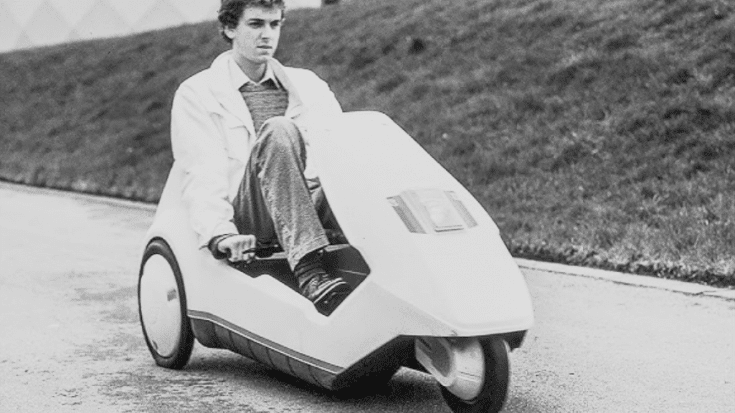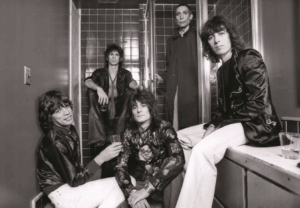7 ’70s Inventions That Were Supposed to Change the World But Didn’t

via Twin-Cam / YouTube
The 1970s was a decade of bold innovation and high hopes, where the future was now, and the sky was the limit. From groundbreaking advancements in technology to ambitious attempts at reshaping everyday life, inventors and engineers pushed the envelope with ideas that seemed like they had leaped straight out of science fiction. These inventions promised to revolutionize transportation, entertainment, and personal safety, painting a vibrant picture of a world transformed by technological progress. Yet, despite their potential, many of these innovations didn’t quite manage to change the world in the ways their creators had envisioned. Instead, they remain as fascinating footnotes in the annals of invention, examples of visionary thinking that, for various reasons, failed to reach their transformative potential. Let’s explore seven such inventions from the 1970s that aimed for the stars but, unfortunately, fell a bit short of their lofty aspirations.
The Concorde
View this post on Instagram
Recognized as one of the most significant leaps in aviation technology, the Concorde originated in the 1970s. This supersonic passenger plane, a result of a Franco-British partnership, redefined speed with its ability to cruise at twice the speed of sound. Imagine reaching from London to New York in three hours, cutting the standard flight duration by more than half.
But what goes up must come down, and the Concorde was no exception. Despite its revolutionary specs, it was burdened by exorbitant operating costs and complaints about sonic booms. The noise produced when it broke the sound barrier limited its routes, decreasing its profitability. Sustainability was also a major issue, and Concorde was finally retired in 2003, failing to revolutionize commercial air travel.
Digital Audio Tape (DAT)
View this post on Instagram
Sony introduced Digital Audio Tape (DAT) as a pioneering advancement in recording technology in the 70s. Poised to set new standards for audio storage, DAT offered sound recording in digital rather than analog form, promising higher quality and easier reproduction.
Despite the initial anticipation, DAT encountered several stumbling blocks. High production costs led to expensive consumer units, which hindered its popularity among the masses. Furthermore, issues with copy protection regulations and disputes created a messy legal situation. As a result, DAT failed to gain general acceptance and was gradually replaced by more affordable and reliable alternatives.
The AVE Mizar
View this post on Instagram
The 1970s was a time of dreaming big, and among the dreamers were those who envisioned a flying car. Such was the AVE Mizar, a hybrid vehicle that melded a Ford Pinto and a small Cessna Skymaster airplane. The idea was to take off from highways and fly above the traffic, escaping terrestrial congestion.
However, the dream ended in a nightmare when the prototype crashed during a test flight, causing fatal injuries to the designers. This unfortunate incident, along with numerous technical problems, including safety issues, spelled the end of the AVE Mizar project.
Smell-O-Vision
View this post on Instagram
The arrival of Smell-O-Vision technology in cinemas during the 1970s intended to transform movie-viewing into a multi-sensory experience. Moviegoers were supposed to encounter relevant scents released perfectly in time with the on-screen action.
Regrettably, the implementation of this ambitious idea faced significant problems. The smells, instead of offering an enhanced viewing experience, were slow to reach the audience and often failed to disperse correctly. Moreover, they tended to blend into an indistinguishable medley rather than offering distinct fragrances. Eventually, Smell-O-Vision was deemed impractical and abandoned.
The Bell Rocket Belt
View this post on Instagram
Personal flight had been fancy for centuries until the flashy Bell Rocket Belt appeared in the ’70s. This compact device, commonly known as a jetpack, was designed to propel a single person through the air. Its spectacular introduction seemed ready to launch a new era of personal transportation.
Reality couldn’t match the fantasy, however. Despite its cool concept, the Bell Rocket Belt proved remarkably impractical. The biggest drawback was its extremely limited flying time – just 21 seconds, a far cry from being a viable transportation method. Widespread personal flight continued to remain the stuff of science fiction.
The Shower Hood
View this post on Instagram
One of the most unique and out-of-the-box inventions from the 1970s in Germany is undoubtedly the Shower Hood. This remarkable contraption was designed to cover the whole head, allowing the wearer to take a shower while keeping their makeup and hair undisturbed.
While the concept might have seemed ingenious at the time, especially to those who spent copious amounts of time on their hair and makeup, it ultimately missed the mark. The overlooked fact was that many, if not most, people not only don’t mind washing their hair when they shower but consider it a hygiene essential. As it turns out, preserving a hairstyle or makeup during a shower was a lower priority compared to a proper and thorough cleanse.
The Sinclair C5
View this post on Instagram
The Sinclair C5, a small, electric tricycle, emerged as a quirky alternative to cars in Britain in the mid-’70s. This personal electric vehicle, seen as an ecological and traffic-busting solution, was the brainchild of British inventor Sir Clive Sinclair.
Though it was novel and environmentally friendly, the Sinclair C5 fell short on practicality and safety. Its low height made it hard to view in regular traffic, raising safety concerns. Also, the open design exposed the driver to the elements, and the minimal range and speed made it impractical for long or speedy commutes. Thus, the Sinclair C5 didn’t succeed in dramatically transforming personal transportation



















